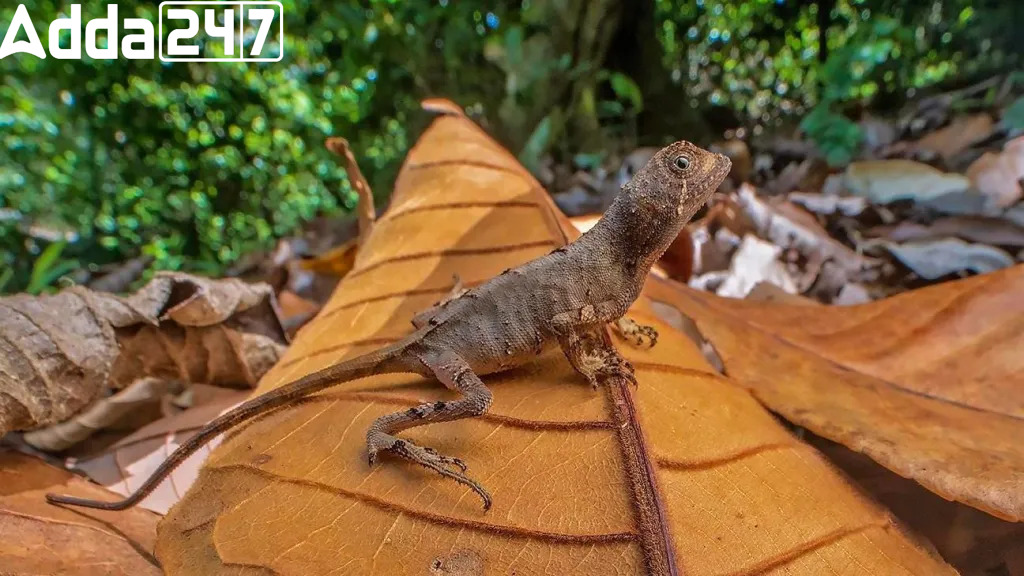In a remarkable discovery, scientists have identified a new species of tiny lizards in the biodiverse forests of the Western Ghats, describing them as diminutive dragons. The newfound species, named Agasthyagama edge or the northern kangaroo lizard, belongs to the Agamidae family, characterized by its diminutive size with a maximum snout-vent length of 4.3 cm.
Context
This species marks the second in the Agasthyagama genus, following the previously reported A. beddomii found in the Sivagiri hills of Tamil Nadu. The recent discovery was made by a collaborative team of scientists from various institutions in India and abroad, conducting research in the southern Western Ghats at Kulamavu in Idukki.
Distinctive Features
- Reduced Fifth Toe: The kangaroo lizard exhibits a reduced fifth toe, rendering them poor climbers. Unlike other lizards, they prefer terrestrial habitats with dense leaf litter cover, where they run fast and seek refuge within dry leaves to avoid predators.
Discovery and Confirmation
Lead author Sandeep Das, a Science and Engineering Research Board (SERB) national postdoctoral fellow at Calicut University, recounts the initial sighting during an expedition in search of the elusive Mahabali frog around 2015. While initially assumed to be A. beddomii, further evidence emerged, leading the researchers to suspect the existence of a new species. Subsequent sightings in the same locality confirmed their hypothesis.
Analyses and Differences
Morphological and genetic analyses substantiated the distinctiveness of the new species, and it was observed that the geographic separation from the closest distributional records is approximately 80 km.
Physical Characteristics
The newly discovered lizard features a uniform dull olive-brown body with a slightly darker head. Notably, it sports a white throat with a broad dark brown stripe on its dewlap, adorned with brick-yellow scales on the outside.
Acknowledgment
Named Agasthyagama edge, the species pays homage to the Evolutionary Distinct and Globally Endangered (EDGE) program of the Zoological Society of London. This program, supporting various researchers, including lead author Dr. Das and co-author K.P. Rajkumar of Aranyakam Nature Foundation, focuses on conservation efforts for unique and endangered species.
Research Team
The collaborative efforts involved researchers from diverse institutions, including Saunak Pal of Bombay Natural History Society, Surya Narayanan of Ashoka Trust for Research in Ecology and the Environment, K. Subin of Kerala Forest Research Institute, Muhamed Jafer Palot from the Zoological Survey of India, and V. Deepak from the University of Wolverhampton.
Publication
The findings of this discovery have been reported in the scientific journal Vertebrate Zoology, published by the Senckenberg Museum in Germany.




 ISRO Launches RESPOND Basket 2025, Calls...
ISRO Launches RESPOND Basket 2025, Calls...
 LVM3-M6 Rocket Set to Launch on December...
LVM3-M6 Rocket Set to Launch on December...
 Michaela Benthaus to Make History as Fir...
Michaela Benthaus to Make History as Fir...







